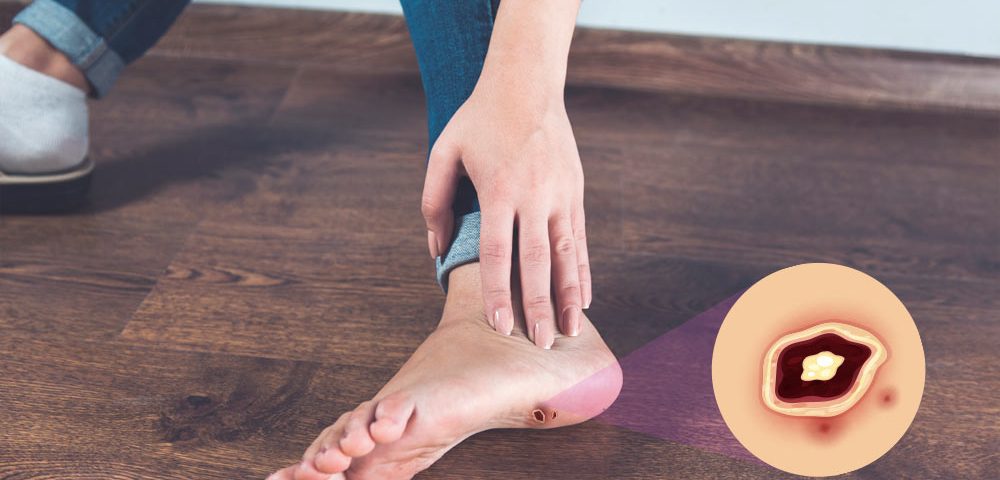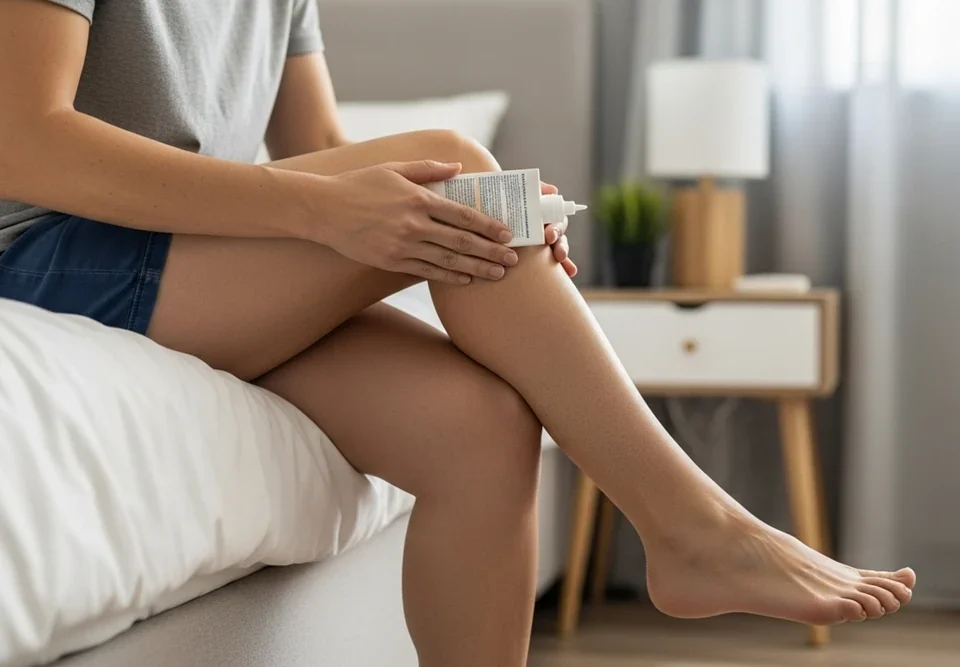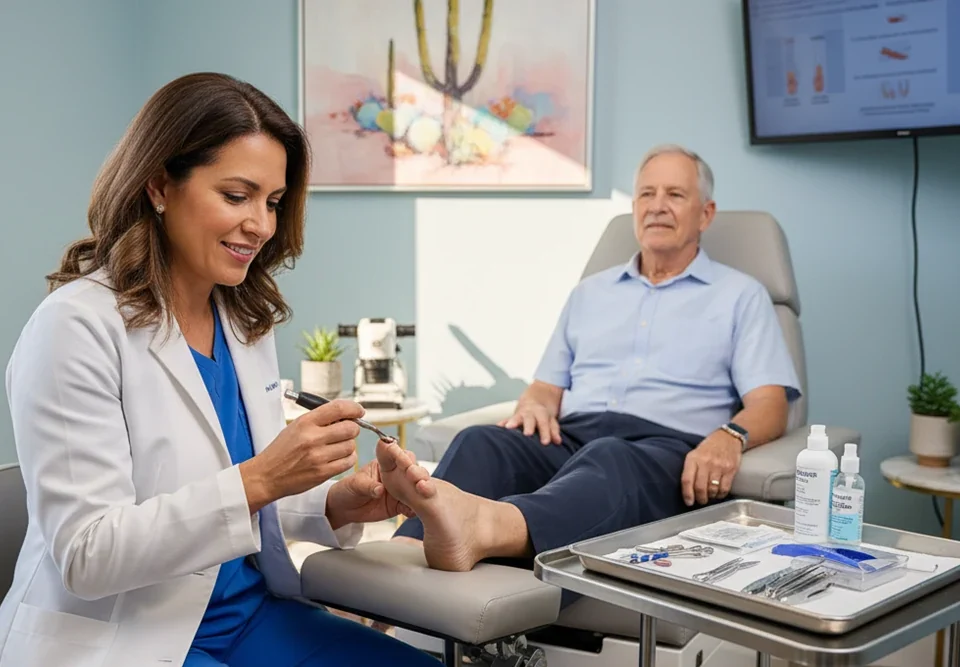
Is Heel Pain: A Sign of Cancer?
July 31, 2025
Walking Again After Achilles Tendon Surgery: How Long Does It Take?
August 7, 2025Living with a diabetic foot ulcer is hard. It hurts, it drains, and it just doesn’t heal like a regular wound. One of the most important parts of healing is using the right dressing for diabetic foot ulcers. But with so many choices, it’s easy to feel overwhelmed.
Let us tell you about effective diabetic wound dressing materials, so you can heal with confidence and avoid more damage to your foot.
Table of Contents
ToggleWound Dressing for Diabetic Foot Ulcers
There’s no one-size-fits-all answer. The best dressing for diabetic foot ulcers depends on what your wound looks like. Below are the ones foot doctors Scottsdale use most in diabetic wound care.
Hydrocolloid Dressings
These are thick, sticky pads that form a soft gel when they touch the wound. They keep the area moist so it can heal faster. They also help the body break down dead skin without scraping. These work best when the wound isn’t leaking too much fluid. They stick well and can stay on for days.
Hydrogel Dressings
These are cool, soft gels that add moisture to dry wounds. If your ulcer has crusty or hard areas, a hydrogel dressing for diabetic foot ulcers helps soften them. It also eases pain. These dressings are good for dry wounds or ones with a bit of dead tissue.
Wet-to-Dry Dressings
These dressings were once common but are no longer recommended for diabetic foot ulcers. They work by drying out and pulling off tissue when removed, but this can harm healthy skin and slow healing. They’re painful, increase infection risk, and have mostly been replaced by modern, moist wound care options.
Alginate Dressings
Made from seaweed, alginate dressing for diabetic foot ulcers soaks up a lot of fluid. When they touch wound fluid, they turn into a gel that covers and protects the area. They’re great for ulcers that leak a lot. They also help control infection and are easy to remove without hurting the skin.
Foam Dressings
A foam dressing for diabetic foot ulcers is soft and thick. It absorbs fluid and gives the ulcer some padding. If your foot ulcer is near a pressure point or if you walk a lot, foam helps prevent more damage. They keep the wound moist but not too wet.
Hydrofiber Dressings
These dressings are like alginates but even better at absorbing. They trap fluid and germs inside so the wound stays clean. They’re often used for ulcers with heavy drainage.
Honey Dressings
Made with medical-grade honey, honey dressings for diabetic foot ulcers fight bacteria, reduce odor, and help clean out dead tissue. They’re gentle and great for mild infections or slow-healing ulcers. Honey keeps the wound moist and supports healing without harming healthy skin.
Silver Dressings
A silver dressing for diabetic foot ulcers is used when there’s infection or a high risk of it. Silver kills a wide range of bacteria fast, including resistant ones like MRSA. They help reduce odor, fight biofilm, and keep the wound clean. Best for short-term use on infected ulcers.
What is the Best Dressing?
Not every wound needs the same care. The best dressing for diabetic foot ulcers depends on what the wound looks like, how much it’s draining, and whether there’s an infection. Always talk to a foot doctor Chandler or a wound care doctor. They’ll look at your ulcer and pick the dressing that fits best.
Here are the dressings that work best in different situations:
| Wound Type / Condition | Best Dressing |
| Dry, shallow wound | Hydrogel Dressings |
| Wound with light drainage | Hydrocolloid Dressings, Foam Dressings |
| Wound with moderate to heavy drainage | Alginate Dressings, Hydrofiber Dressings, Foam Dressings |
| Infected or high-risk wound | Silver Dressings, Honey Dressings |
| Wound with thick dead tissue | Hydrogel Dressings |
| Smelly wound | Honey Dressings |
| Fragile or sensitive skin | Foam Dressings |
| Ulcer on a pressure point | Foam Dressings |
Diabetic Wound Dressing Procedure
Dressing a diabetic foot ulcer is more than just putting on a bandage. It’s a step-by-step process that helps the wound heal safely.
- Clean the wound with a saline solution or a gentle wound cleanser.
- Remove dead tissue if needed. This can be done by a podiatrist using tools or special dressings.
- Apply the chosen dressing based on the wound type.
- Secure it with a bandage or wrap.
- Change the dressing as recommended, sometimes daily, sometimes every few days.
- Watch for signs of infection like odor, pus, redness, or more pain.
Regular dressing changes and follow-ups are key. The goal is to keep the wound moist but not soggy, clean but not dry.
Diabetic Foot Ulcer and Wound Treatments in Phoenix, Arizona
At Foot and Ankle Specialty Centers, we’ve treated thousands of diabetic wounds. We know that besides treating the ulcer, healing is about protecting your whole foot, preventing future ulcers, and helping you stay active and pain-free.
We use advanced wound care options, in-office debridement, and custom dressing plans. So, schedule an appointment today to get expert diabetic foot ulcer care in Phoenix, Gilbert, Scottsdale, Chandler, and Mesa.
FAQs
What is the best dressing for diabetic foot ulcers?
It depends on the wound type, but hydrocolloid, foam, alginate, and antimicrobial dressings are often used.
What kind of dressing is used for diabetic wounds?
Dressings that control moisture, prevent infection, and help tissue grow, like hydrogel, foam, alginate, or silver-based dressings.
How to dress diabetic ulcers?
Clean the wound, apply the right dressing, cover it properly, and change it regularly as instructed by your podiatrist.
What is the best bandage for a diabetic ulcer?
Foam or hydrofiber bandages are best for most ulcers, but always check with a wound care provider first.




